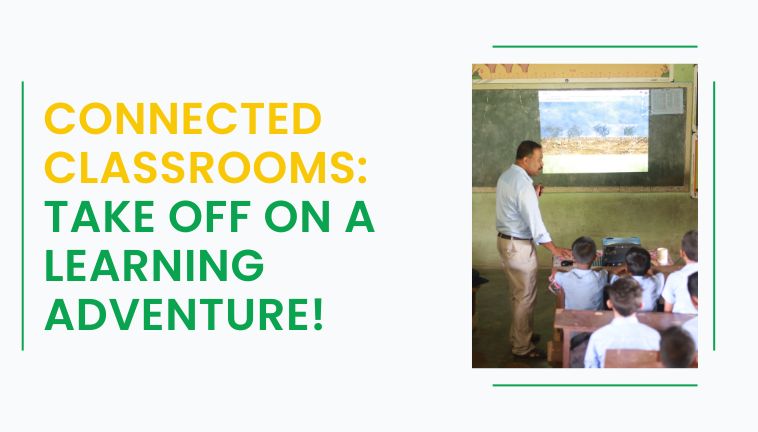Blogs
Connected Classrooms: Take Off on a Learning Adventure!

Classrooms are evolving! Static lectures and textbooks are out. Technology is in, creating connected classrooms for a dynamic and collaborative learning experience.
But how do you build a connected classroom? What tools and technologies are essential? This blog post will equip you with the knowledge to transform your classroom into a vibrant hub of digital learning.
Digital Classrooms vs. Connected Classrooms: Where's the Divide?
A digital classrooms simply incorporates technology into the learning process. This could involve using interactive whiteboards, educational apps, or online learning platforms. While these tools enhance engagement, they primarily focus on individual or class-level activities within the four walls of a physical classroom.
Connected classrooms, on the other hand, leverage the power of digital tools to transcend physical boundaries. Video conferencing, online collaboration, and social learning tools connect students across classrooms, schools, and even borders. This fosters a dynamic learning environment where students can:
- Collaborate on projects: Imagine a science class in California working on a climate change project with a counterpart in India, sharing data and brainstorming solutions together virtually.
- Engage with experts: A history lesson comes alive when students in Europe have a live video chat with a museum curator in Egypt, asking questions and getting firsthand insights.
- Develop global awareness: By interacting with students from diverse backgrounds and cultures, students develop empathy, tolerance, and a broader understanding of the world.
Essential Tools for a Connected Classroom
- Learning Management Systems (LMS): A central platform like Schoology or Canvas streamlines communication, distributes assignments, facilitates discussions, and tracks student progress. In addition, it allows for easy content organization and sharing.
- Interactive Whiteboards (IWBs): These digital displays enhance presentations, incorporate multimedia content, and promote interactive learning experiences. Furthermore, they allow for real-time collaboration between students and teachers.
- Student Response Systems: Tools like Kahoot! and Mentimeter enable real-time engagement through quizzes, polls, and interactive activities. This fosters a more engaging learning environment for all students.
- Cloud-Based Collaboration Tools: Platforms like Google Suite or Microsoft 365 empower students to work together on documents, presentations, and projects in real-time. This facilitates collaboration even outside the classroom.
- Video Conferencing Tools: Applications like Zoom and Google Meet connect students and educators with experts or peers from around the world. This enriches learning with diverse perspectives.
- Educational Games and Simulations: Engaging games and simulations like Minecraft Education Edition or iCivics make learning interactive and fun, promoting a deeper understanding of complex concepts. Ultimately, this leads to better learning outcomes.

Getting Started with Your Connected Classroom Journey
The beauty of connected classrooms is their scalability. Here are some initial steps to get you started:
- Identify Partner Schools: Connect with schools that share similar curriculum themes or interests to facilitate initial project collaborations.
- Explore Free Technology: Utilize free video conferencing tools and online collaboration platforms to kick things off.
- Start Small: Begin with simple discussions or project collaborations before diving into complex ventures.
- Teacher Training: Provide educators with adequate training on using digital tools effectively to maximize the potential of connected classrooms.
Ready to break down classroom walls and connect your students with the world?
Schoolnet understands the challenges and rewards of creating a connected classroom. We offer a comprehensive suite of digital classroom solutions, including:
- Installation and configuration of essential hardware and software.
- Training and professional development for educators on integrating technology effectively into their teaching practices.
- Ongoing technical support to ensure your connected classroom runs smoothly.
Visit our Digital Classrooms offerings page to learn more about how SchoolNet can empower you to build a thriving connected classroom!
By leveraging the power of technology and the right tools, you can create a connected classroom that fosters engagement, collaboration, and a love for learning in your students.




